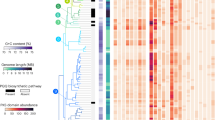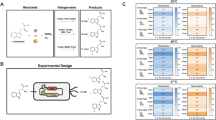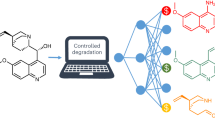Abstract
The availability of the omega-3 fatty acids eicosapentaenoic acid (EPA) and docosahexaenoic acid (DHA) is currently limited because they are produced mainly by marine fisheries that cannot keep pace with the demands of the growing market for these products. A sustainable non-animal source of EPA and DHA is needed. Metabolic engineering of the oleaginous yeast Yarrowia lipolytica resulted in a strain that produced EPA at 15% of dry cell weight. The engineered yeast lipid comprises EPA at 56.6% and saturated fatty acids at less than 5% by weight, which are the highest and the lowest percentages, respectively, among known EPA sources. Inactivation of the peroxisome biogenesis gene PEX10 was crucial in obtaining high EPA yields and may increase the yields of other commercially desirable lipid-related products. This technology platform enables the production of lipids with tailored fatty acid compositions and provides a sustainable source of EPA.
This is a preview of subscription content, access via your institution
Access options
Subscribe to this journal
Receive 12 print issues and online access
$209.00 per year
only $17.42 per issue
Buy this article
- Purchase on Springer Link
- Instant access to full article PDF
Prices may be subject to local taxes which are calculated during checkout






Similar content being viewed by others
References
Ma, D.W.L. et al. n-3 PUFA and membrane microdomains: a new frontier in bioactive lipid research. J. Nutr. Biochem. 15, 700–706 (2004).
Funk, C.D. Prostaglandins and leukotrienes: advances in eicosanoid biology. Science 294, 1871–1875 (2001).
Deckelbaum, R.J. & Torrejon, C. The omega-3 fatty acid nutritional landscape: health benefits and sources. J. Nutr. 142, 587S–591S (2012).
Yokoyama, M. et al. Effects of eicosapentaenoic acid on major coronary events in hypercholesterolaemic patients (JELIS): a randomised open-label, blinded endpoint analysis. Lancet 369, 1090–1098 (2007).
Bays, H.E. et al. Eicosapentaenoic acid ethyl ester (AMR101) therapy in patients with very high triglyceride levels (from the multi-center, plAcebo-controlled, randomized, double-blINd, 12-week study with an open-label extension [MARINE] trial). Am. J. Cardiol. 108, 682–690 (2011).
Schaefer, E.J. et al. Effects of eicosapentaenoic acid, docosahexaenoic acid, and olive oil on cardiovascular disease risk factors. Circulation 122, A20007 (2010).
Gillies, P.J., Harris, W.S. & Kris-Etherton, P.M. Omega-3 fatty acids in food and pharma: the enabling role of biotechnology. Curr. Atheroscler. Rep. 13, 467–473 (2011).
Metz, J.G. et al. Production of polyunsaturated fatty acids by polyketide synthases in both prokaryotes and eukaryotes. Science 293, 290–293 (2001).
Meesapyodsuk, D. & Qiu, X. The front-end desaturase: structure, function, evolution and biotechnological use. Lipids 47, 227–237 (2012).
Wallis, J.G. & Browse, J. The Δ8-desaturase of Euglena gracilis: an alternate pathway for synthesis of 20-carbon polyunsaturated fatty acids. Arch. Biochem. Biophys. 365, 307–316 (1999).
Zhu, Q. et al. Metabolic engineering of an oleaginous yeast for the production of omega-3 fatty acids. in Single Cell Oils: Microbial and Algal Oils (eds. Cohen, Z. & Ratledge, C.) 51–73 (AOCS press, Urbana, 2010).
Barclay, W.R., Meager, K.M. & Abril, J.R. Heterotrophic production of long chain omega-3 fatty acids utilizing algae and algae-like microorganisms. J. Appl. Phycol. 6, 123–129 (1994).
Barclay, W., Weaver, C. & Metz, J. Development of a docosahexaenoic acid production technology using Schizochytrium: a history perspective. in Single Cell Oils (eds. Cohen, Z. & Ratledge, C.) 36–73 (AOCS press, Champaign, Illinois, 2005).
Qi, B. et al. Production of very long chain polysaturated omega-3 and omega-6 fatty acids in plants. Nat. Biotechnol. 22, 739–745 (2004).
Napier, J.A. & Sayanova, O. The production of very-long-chain PUFA biosynthesis in transgenic plants: towards a sustainable source of fish oils. Proc. Nutr. Soc. 64, 387–393 (2005).
Damude, H.G. & Kinney, A.J. Engineering oilseeds to produce nutritional fatty acids. Physiol. Plant. 132, 1–10 (2008).
Cheng, B. et al. Towards the production of high levels of eicosapentaenoic acid in transgenic plants: the effects of different host species, genes and promoters. Transgenic Res. 19, 221–229 (2010).
Petrie, J.R. et al. Metabolic engineering of omega-3 long-chain polyunsaturated fatty acids in plants using an acyl-CoA Δ6-desaturase with ω3-preference from the marine microalga Micromonas pusilla. Metab. Eng. 12, 233–240 (2010).
Tavares, S. et al. Metabolic engineering of Saccharomyces cerevisiae for production of eicosapentaenoic acid, using a novel Δ5-desaturase from Paramecium tetraurelia. Appl. Environ. Microbiol. 77, 1854–1861 (2011).
Adarme-Vega, T.C. et al. Microalgal biofactories: a promising approach towards sustainable omega-3 fatty acid production. Microb. Cell Fact. 11, 96 (2012).
Xue, Z. et al. Identification and characterization of new Δ-17 fatty acid desaturases. Appl. Microbiol. Biotechnol. 97, 1973–1985 (2013).
Pollak, D.W. et al. Isolation of a Δ5 desaturase gene from Euglena gracilis and functional dissection of its HPGG and HDASH motifs. Lipids 47, 913–926 (2012).
Hong, S.-P. et al. Engineering Yarrowia lipolytica to express secretory invertase with strong FBA1IN promoter. Yeast 29, 59–72 (2011).
Blazeck, J., Liu, L., Redden, H. & Alper, H. Tuning gene expression in Yarrowia lipolytica by a hybrid promoter approach. Appl. Environ. Microbiol. 77, 7905–7914 (2011).
Weterings, E. & Chen, D.J. The endless tale of non-homologous end-joining. Cell Res. 18, 114–124 (2008).
Damude, H.G., He, H., Liao, D.-I. & Zhu, Q.Q. Mutant Δ8 desaturase genes engineered by targeted mutagenesis and their use in making polyunsaturated fatty acids. US patent 7,709,239 (2010).
Prestele, J. et al. Different functions of the C3HC4 zinc RING finger peroxins PEX10, PEX2, and PEX12 in peroxisome formation and matrix protein import. Proc. Natl. Acad. Sci. USA 107, 14915–14920 (2010).
Titorenko, V.I., Smith, J.j., Szilard, R.K. & Rachubinski, R.A. Peroxisome biogenesis in the yeast Yarrowia lipolytica. Cell Biochem. Biophys. 32, 21–26 (2000).
Aursand, M., Standal, I.B. & Axelson, D.E. High-resolution 13C nuclear magnetic resonance spectroscopy pattern recognition of fish oil capsules. J. Agric. Food Chem. 55, 38–47 (2007).
Tai, M. & Stephanopoulos, G. Engineering the push and pull of lipid biosynthesis in oleaginous yeast Yarrowia lipolytica for biofuel production. Metab. Eng. 15, 1–9 (2013).
Wen, Z. & Chen, F. Prospects for eicosapentaenoic acid production using microorganisms. in Single Cell Oils (eds. Cohen, Z. & Ratledge, C) 138–160 (AOCS Press, Champaign, Illinois, 2005).
Ratledge, C. Single cell oils for the 21st century. in Single Cell Oils (eds. Cohen, Z. & Ratledge, C.) 1–20 (AOCS Press, Champaign, Illinois, 2005).
Groenewald, M. et al. Yarrowia lipolytica: safety assessment of an oleaginous yeast with a great industrial potential. Crit. Rev. Microbiol. (2013).
Barth, G. et al. Functional genetics of Yarrowia lipolytica. in Functional Genetics of Industrial Yeasts: Topics in Current Genetics (ed. de-Winde, H.) 227–271 (Springer Verlag, Berlin, Germany, 2003).
Dujon, B. et al. Genome evolution in yeasts. Nature 430, 35–44 (2004).
Beopoulos, A., Nicaud, J.-M. & Gaillardin, C. An overview of lipid metabolism in yeasts and its impact on biotechnological processes. Appl. Microbiol. Biotechnol. 90, 1193–1206 (2011).
Nicaud, J.-M. Yarrowia lipolytica. Yeast 29, 409–418 (2012).
Domergue, F. et al. Acyl carriers used as substrates by the desaturases and elongases involved in very long-chain polyunsaturated fatty acids biosynthesis reconstituted in yeast. J. Biol. Chem. 278, 35115–35126 (2003).
Damude, H.G. et al. Identification of bifunctional Δ12/ω3 fatty acid desaturases for improving the ratio of ω3 to ω6 fatty acids in microbes and plants. Proc. Natl. Acad. Sci. USA 103, 9446–9451 (2006).
Sumita, T. et al. Peroxisome deficiency represses the expression of n-alkane–inducible YlALK1 encoding cytochrome P450ALK1 in Yarrowia lipolytica. FEMS Microbiol. Lett. 214, 31–38 (2002).
Flores, C.-L. & Gancedo, C. Yarrowia lipolytica mutants devoid of pyruvate carboxylase activity show an unusual growth phenotype. Eukaryot. Cell 4, 356–364 (2005).
Griffiths, G., Stobart, A.K. & Stymne, S. Δ6- and Δ12-desaturase activities and phosphatidic acid formation in microsomal preparations from the developing cotyledons of common borage (Borago officinalis). Biochem. J. 252, 641–647 (1988).
Sherman, F. Getting started with yeast. in Methods Enzymology (eds. Guthrie, C. & Fink, G.R.) 194, 3–20 (Academic Press, New York, 1991).
Ausubel, F.M. et al. Current Protocols in Molecular Biology (John Wiley, New York, 2010).
Chen, D.C., Beckerich, J.M. & Gaillardin, C. One-step transformation of the dimorphic yeast Yarrowia lipolytica. Appl. Microbiol. Biotechnol. 48, 232–235 (1997).
Fickers, P. et al. New disruption cassettes for rapid gene disruption and marker rescue in the yeast Yarrowia lipolytica. J. Microbiol. Methods 55, 727–737 (2003).
Cahoon, E.B., Ripp, K.G., Hall, S.E. & Kinney, A.L. Formation of conjugated Δ8, Δ10-double bonds by Δ12-oleic acid desaturase-related enzymes: biosynthetic origin of calendic acid. J. Biol. Chem. 276, 2637–2643 (2001).
Zhang, H., Damude, H.G. & Yadav, N.S. Three diacylglycerol acyltransferases contribute to oil biosynthesis and normal growth in Yarrowia lipolytica. Yeast 29, 25–38 (2012).
Christie, W.W. Lipid Analysis, 3rd ed. (The Oily Press, Bridgwater, UK, 2003).
Walther, P. & Ziegler, A. Freeze substitution of high-pressure frozen samples: the visibility of biological membranes is improved when the substitution medium contains water. J. Microsc. 208, 3–10 (2002).
Troëng, S. Oil determination of oilseed. Gravimetric routine method. J. Am. Oil Chem. Soc. 32, 124–126 (1955).
Acknowledgements
We are grateful to H. Bryndza and J. Pierce for their strong support. We thank A. Kinney and S. Picataggio for their suggestions, K. Czymmek and J. Li for their technical help and D. Chesire for critical reading of this manuscript.
Author information
Authors and Affiliations
Contributions
Q.Z. was responsible for strain-construction strategy, codon optimization of synthetic genes and design and construction of integration plasmids, and served as the lead for the strain-development team; Z.X., N.S.Y., H.G.D., E.N.J. and Q.Z. jointly conceived the concepts for gene isolation, selection and pathway engineering; Z.X., P.L.S., S.-P.H. and Q.Z. determined integration sites; R.A.R., J.E.S., J.W., D.W.P., M.D.B., D.J.M. and H.Z. performed molecular biology experiments, transformation, primary screening, flask assays and gas chromatography analyses; D.H.H. performed the analyses of fatty acid profiles, lipid content and different lipid classes; P.L.S. and M.D.B. designed and performed homologous recombination experiments for targeted PEX10 gene disruption; Z.X., D.J.M. and K.C. performed cell biology experiments; D.X., D.R.S., D.M.A., S.A.B. and B.D.T. designed and performed fermentation experiments; D.X. and B.D.T. developed models for fermentation experiments; E.F.M. performed the NMR analysis; Z.X., M.W.B., S.-P.H., N.S.Y., E.N.J. and Q.Z. prepared the manuscript; M.W.B. prepared the figures.
Corresponding author
Ethics declarations
Competing interests
The authors declare no competing financial interests.
Supplementary information
Supplementary Text and Figures
Supplementary Tables 1–3 (PDF 319 kb)
Rights and permissions
About this article
Cite this article
Xue, Z., Sharpe, P., Hong, SP. et al. Production of omega-3 eicosapentaenoic acid by metabolic engineering of Yarrowia lipolytica. Nat Biotechnol 31, 734–740 (2013). https://doi.org/10.1038/nbt.2622
Received:
Accepted:
Published:
Issue Date:
DOI: https://doi.org/10.1038/nbt.2622
This article is cited by
-
The logic of carbon substitution: from fossilised life to “cell factories”
Review of Agricultural, Food and Environmental Studies (2024)
-
Expansion of YALIcloneHR toolkit for Yarrowia lipolytica combined with Golden Gate and CRISPR technology
Biotechnology Letters (2024)
-
Installing xylose assimilation and cellodextrin phosphorolysis pathways in obese Yarrowia lipolytica facilitates cost-effective lipid production from lignocellulosic hydrolysates
Biotechnology for Biofuels and Bioproducts (2023)
-
Refactoring the architecture of a polyketide gene cluster enhances docosahexaenoic acid production in Yarrowia lipolytica through improved expression and genetic stability
Microbial Cell Factories (2023)
-
Engineering co-utilization of glucose and xylose for chemical overproduction from lignocellulose
Nature Chemical Biology (2023)



